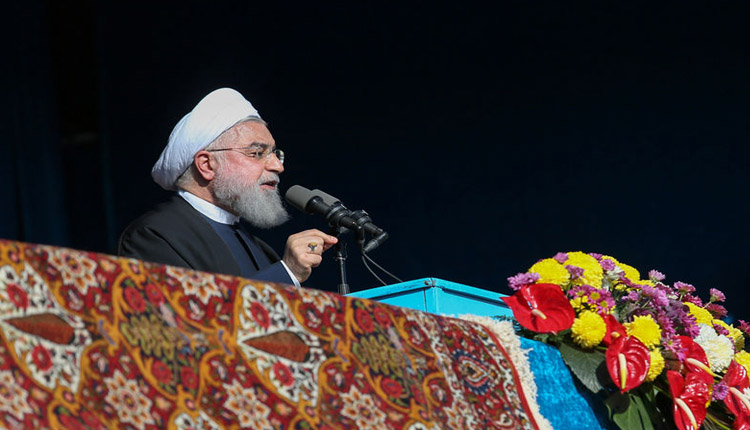Iranian President Hassan Rouhani declared on Wednesday that street unrest had been put down in a victory over foreign enemies, after a wave of violent demonstrations swept the country following a hike in fuel prices last week.
Amnesty International said it had documented at least 106 deaths of protesters killed by security forces, which would make it the worst street unrest in Iran in at least a decade and possibly since the 1979 Islamic Revolution.
The internet has been shut down in Iran for days, making it difficult to obtain reliable reports of the extent of the unrest. But it appears to be the worst violence at least since Iran put down a “Green Revolution” in 2009, when dozens were killed over several months.
Although the authorities said the streets were now quiet, social media videos showed what appeared to be continuing scenes of violence on Wednesday, a fifth day of unrest.
It comes at a time when Iran’s economy has been crippled by U.S. sanctions that have nearly halted its exports of oil, and when governments in Lebanon and Iraq that include Iran-backed factions have also faced increasingly violent demonstrations.
“The Iranian people have again succeeded in an historic test and shown they will not let enemies benefit from the situation, even though they might have complaints about the country’s management,” Rouhani said, state TV reported.
Iran’s top authority, Supreme Leader Ayatollah Ali Khamenei, said on Tuesday the protests had been a security matter, not a popular movement, and had been dealt with successfully.
Live footage on state television showed thousands joining pro-government demonstrations on Wednesday, with rallies in several cities and towns, in which people chanted “Death to America” and “Death to Israel”.
At least 100 banks and dozens of buildings and cars have been torched, Iranian officials said, adding that about 1,000 protesters had been arrested. Quoting security sources, Iran’s semi-official Fars news agency said several Iranian dual nationals were also arrested.
Tehran has blamed “thugs” linked to exiles and foreign foes – the United States, Israel and Saudi Arabia – for the unrest.
“The detained German, Turkish and Afghan dual nationals had been trained and funded by foreign intelligence services to … stir up civil disobedience in Iran … they had equipment to be used for sabotage,” Fars reported, without elaborating.
Government spokesman Ali Rabiei said a plot to bomb Iran’s major gas production installations in Assalouyeh on the Gulf had been thwarted, blaming it on “rioters”, Iranian media reported.
Iranian authorities said several people, including members of the security forces and police, had been killed. A local official said on Wednesday “one of the leaders of the riots in Kermanshah Province was killed” by security forces.
Amnesty International said it derived its death toll of at least 106 protesters killed in 21 cities from witness reports, verified videos and information from human rights activists.
It said the authorities were taking dead bodies from the streets and refusing to return them or forcing families to bury them in haste.
Iran’s U.N. mission on Wednesday dismissed the casualty reports as “speculative, not reliable” unless confirmed by the Tehran government.
“The baseless allegations and fabricated figures by biased Western entities do not shake government’s determination in making prudent economic decisions,” mission spokesman Alireza Miryousefi tweeted.
The struggle of ordinary Iranians to make ends meet has become harder since last year when U.S. President Donald Trump withdrew the United States from Tehran’s nuclear deal with world powers and reimposed sanctions on the country.
